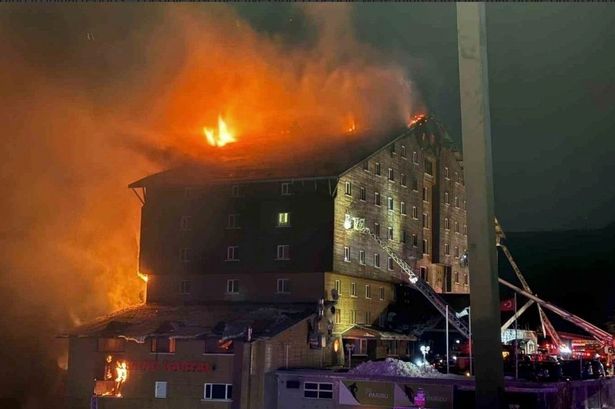The tranquility of the Kartalkaya ski resort in northwestern Turkey was shattered on a fateful day when a devastating fire erupted at a hotel restaurant, claiming the lives of ten tourists. The incident sent shockwaves through the popular winter destination, leaving a trail of grief and raising questions about fire safety protocols. As authorities launched an investigation into the cause of the tragedy, the resort community grappled with the immense loss and the implications for the future of tourism in the region.
The fire broke out in the early hours of the morning, rapidly engulfing the restaurant located within the hotel complex. The blaze spread with alarming speed, trapping numerous guests inside the building. The thick smoke and intense flames created a chaotic scene as panicked vacationers scrambled to escape the inferno. Firefighters battled valiantly to bring the blaze under control, but their efforts were hampered by the challenging conditions, including the remote location and the sub-zero temperatures. As the fire raged, reports emerged of missing persons, families separated in the chaos, and frantic attempts to locate loved ones. The initial reports of casualties were grim, and the number continued to rise as rescuers combed through the charred remains of the restaurant.
The confirmation of ten fatalities brought a somber reality to the unfolding tragedy. The victims, identified as tourists from various countries, had come to Kartalkaya to enjoy the winter wonderland, unaware that their vacation would end in such a horrific manner. Their untimely deaths cast a pall over the resort, transforming a place of joy and recreation into a scene of mourning and reflection. The identities of the victims were gradually released to the public, accompanied by expressions of condolences and outpourings of grief from around the world. Stories emerged of families shattered, lives cut short, and dreams extinguished by the relentless flames.
As the immediate crisis subsided, attention turned to understanding the cause of the fire and preventing similar tragedies in the future. A comprehensive investigation was launched by Turkish authorities, focusing on potential fire code violations, the effectiveness of the hotel’s fire safety systems, and the response of emergency services. Preliminary findings suggested that the fire may have originated in the kitchen area of the restaurant, potentially due to a malfunctioning cooking appliance or an electrical fault. Questions were raised about the adequacy of fire suppression systems, escape routes, and staff training in emergency procedures.
The Kartalkaya fire served as a stark reminder of the importance of stringent fire safety regulations and their rigorous enforcement in tourist destinations. The incident prompted calls for enhanced safety inspections, stricter building codes, and mandatory fire drills in hotels and resorts. Experts emphasized the need for comprehensive fire safety plans, including early warning systems, clearly marked evacuation routes, and readily available fire extinguishers. The tragedy underscored the critical role of staff training in handling emergencies and guiding guests to safety during such incidents.
The long-term impact of the fire on Kartalkaya’s tourism industry remained uncertain. While the resort’s natural beauty and winter attractions continued to draw visitors, the tragedy inevitably cast a shadow over its reputation. Rebuilding trust and reassuring tourists of their safety became paramount for the local community and businesses. Efforts were initiated to promote enhanced safety measures, implement stricter regulations, and communicate these improvements to potential visitors. The healing process would undoubtedly be lengthy, requiring a concerted effort to address the underlying safety concerns and restore confidence in Kartalkaya as a safe and enjoyable destination. The incident served as a poignant reminder of the fragility of life and the importance of prioritizing safety and preparedness in all aspects of tourism and hospitality.














